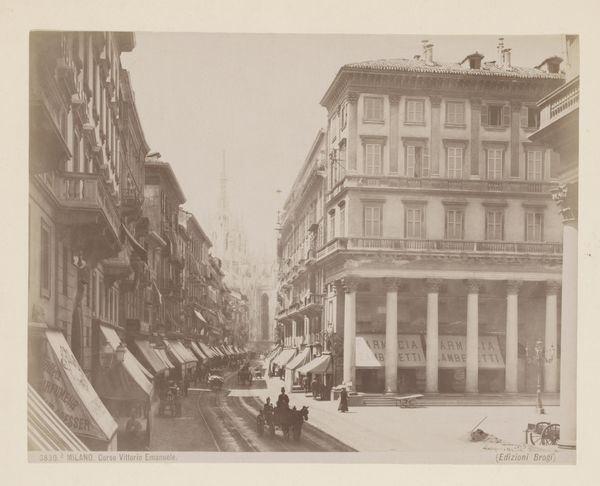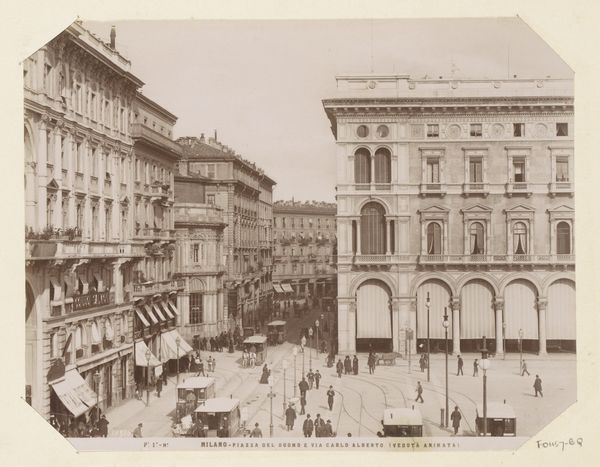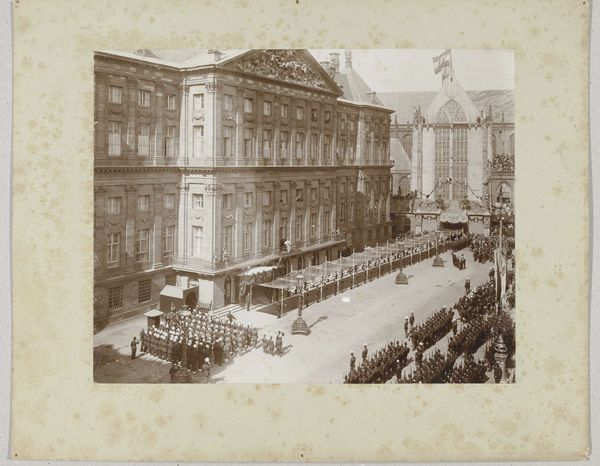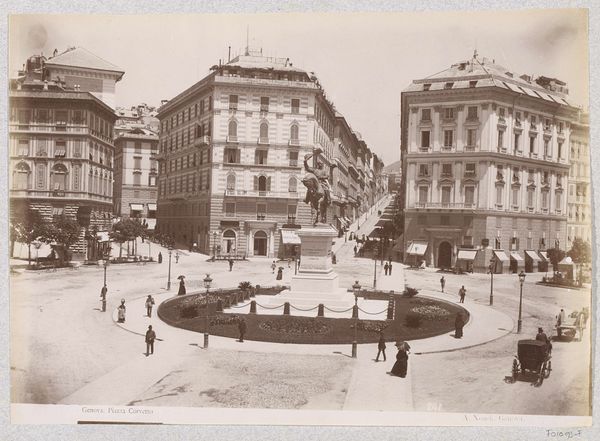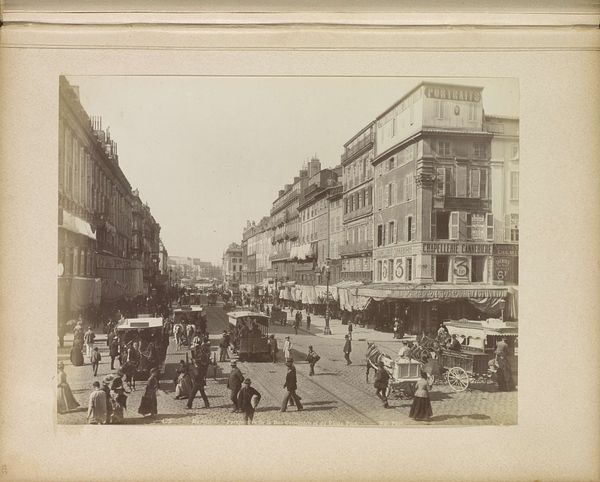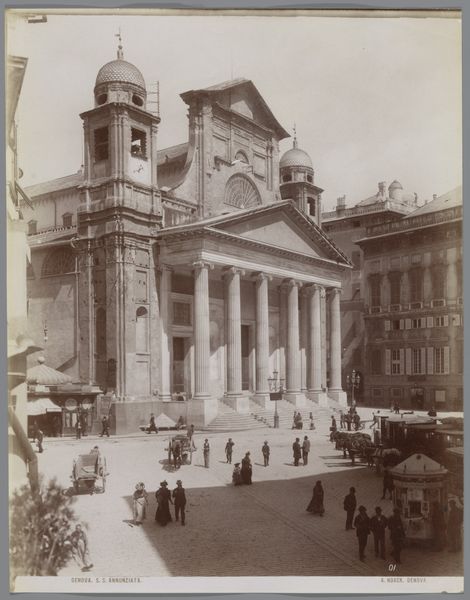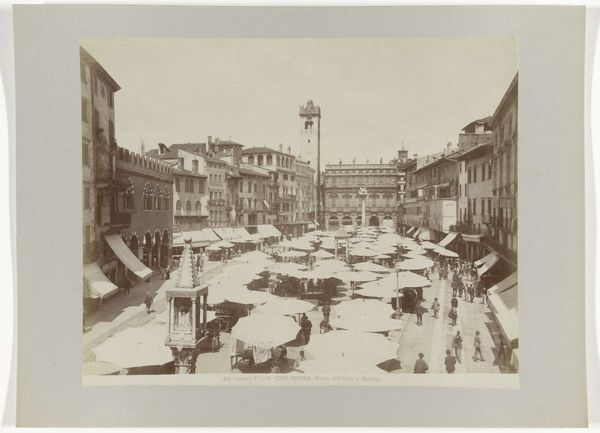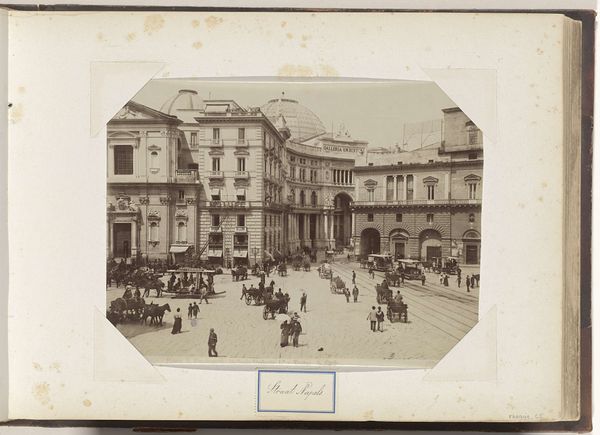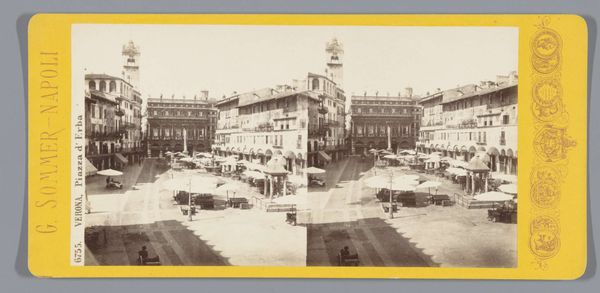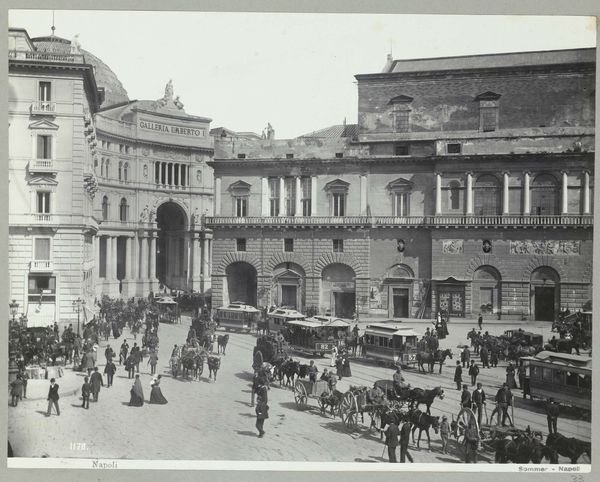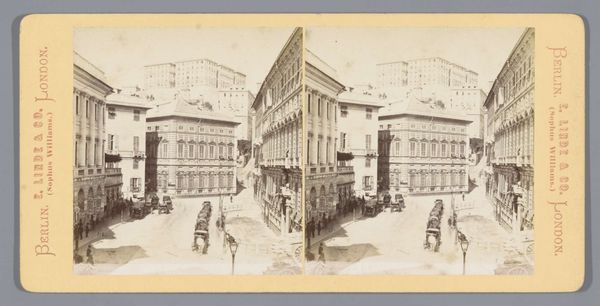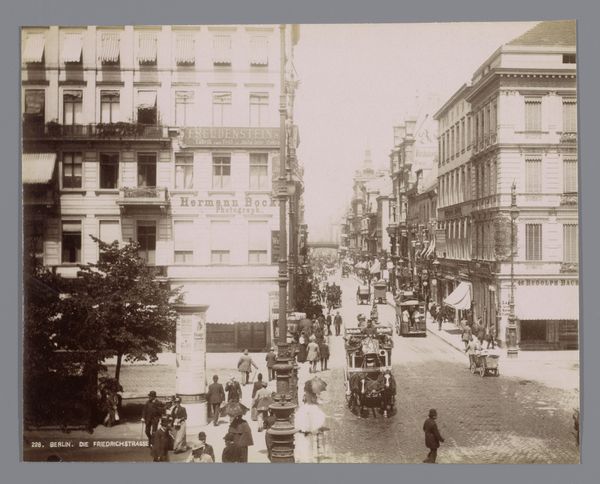
photography
#
architectural landscape
#
landscape
#
photography
#
square
#
19th century
#
cityscape
#
realism
Dimensions: height 214 mm, width 282 mm
Copyright: Rijks Museum: Open Domain
Editor: This photograph, "Piazza Fontana Morose in Genua," was captured by Alfredo Noack sometime between 1870 and 1890. I find the scale fascinating – how Noack framed this bustling square using photography. It's like he's documented a whole segment of society. What do you notice about it? Curator: Well, considering this photographic print as an artifact of its time, what immediately strikes me is its relationship to industrialization and urban development. Look at how the photographer meticulously captures the architecture—the way these buildings define the public square. Note the materiality of the architecture; consider the labor involved in constructing these buildings in Genoa during this era. The image becomes less about aesthetics and more about revealing class structure. How does that strike you? Editor: It makes me think about the consumption and ownership represented here. It almost feels like the photograph is a transaction in itself, selling an image of the city and its success. What was Noack trying to communicate by choosing this location? Curator: Possibly how urban life was transforming due to shifts in material production, consider horse-drawn carriages being phased out by motorized transport later on. This location allowed him to exhibit a cross-section of Genovese society shaped by new production models. How might the rise of photographic printing affect the value of handmade paintings, perhaps, as methods of display or status symbols? Editor: That gives me a completely different view of this picture. Thank you, seeing it in the context of industry really adds layers. Curator: And thinking about the act of photographic production in itself expands what it means for us today!
Comments
No comments
Be the first to comment and join the conversation on the ultimate creative platform.
